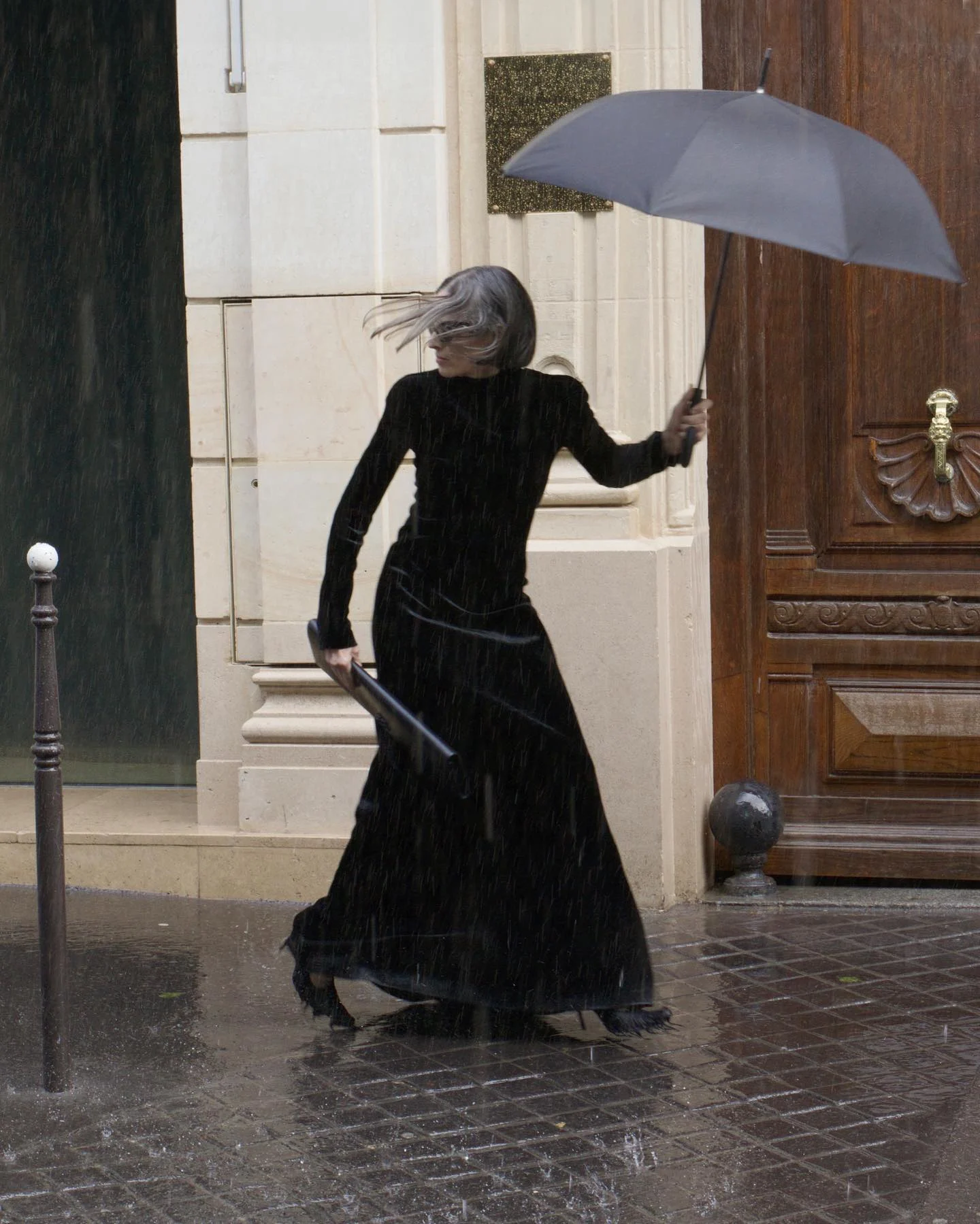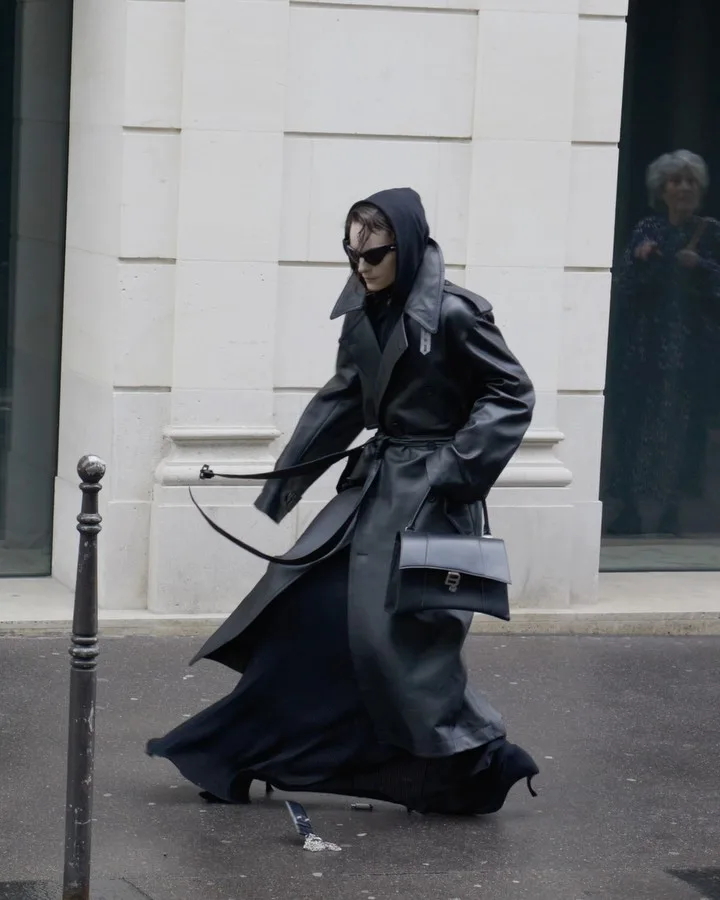
Paris and Barcelona-based visual artist Mau Morgo’s work is entirely intertwined with internet culture: surreal marketing campaigns meet intense music videos in a jungle of online-coded paraphernalia that reflects the varied and chaotic lives we live online. He tells Günseli Yalcinkaya how he’s using film as a playground to push boundaries and experiment, and to hopefully communicate some truth about the pros and cons of our terminally plugged-in existence.
There’s a famous painting by the Polish painter Jan Matejko that depicts a solemn jester sitting alone in a chair. ”Stańczyk” was first unveiled in 1862, but has been making the rounds on social media in recent years as a meme, with users drawing gleeful comparisons between the joker’s sad expression and our own online condition as content creators performing for the feed. For Mau Morgo, whose work often sits at the intersection of art and technology, the image is particularly useful in describing his role as a filmmaker. “The jester is this person that needs to entertain the king,” he says. “Similarly, I’m trying to tell the truth about how I see the world around us right now. But I have to do it in a nice or entertaining way, even if the raw truth is that everything is kind of fucked up.”
Whether it’s sending a marionette doll after a cohort of glitching dancers for Brutalismus 3000’s “Europaträume” music video or posing as a peeping tom for Balenciaga’s latest social media campaign, the Paris and Barcelona-based visual artist takes to the trickster allegations with pride, drawing on a well of internet culture to imagine delightfully chaotic videos that pull inspiration from being terminally online. The director’s Instagram is a sea of online-coded paraphernalia: clips of sex dolls playing chess or a man jerking off in front of a multi-screen gaming set-up in the middle of nature, AI-generated landscapes, mirror selfie montages and this ultra-cute selection of smiling cloud pics.
For anyone who’s spent enough time online, it’s this sort of unfiltered approach that’s typical of hours spent doomscrolling the internet, with recurrent themes exploring the relationship between man and machine, and the effect that technology has on our everyday lives. “Everyone is just experimenting and trying to find meaning in all this in a very awkward and clumsy way,” Morgo affirms. “I see [filmmaking] as a playground where I can just play and enjoy as much as I can. Push the boundaries and see if people get it or don't get it. And it seems like now, finally, people are starting to understand a lot of my work.”
Morgo caught his first big break in 2019 with the release of Rosalía’s “De aqui no Sales” music video, which he co-directed with Diana Kunst. “I still didn’t have a clear narrative in my work back then,” he explains. “It’s only in this last year that I’ve really started to express all my crazy ideas”. He describes the biggest turning point as the pandemic when he first tapped into the mind-expanding potential of the internet. “It all comes from microdosing LSD during COVID, which is when I learned about cybernetics, and everything just exploded from there,” he laughs. “It was like, if I can’t travel outside, I’m going to travel inside.”
For Morgo, the internet is a disruptive force that can be harnessed for change, whether that means building an idea up from scratch or smashing it up entirely. He doesn’t spend much time reading (“I’m an awful reader because of the internet,” he asserts), but when he does, it’s books like Mark Fisher’s “Capitalist Realism” and Andreas Malm’s “How to Blow Up a Pipeline”. “It always comes to rebellion and violence,” he explains. “The way I see it, if you think the world is fucked up, just do something about it.”
How can we create a relationship through this technology that we have available to us, but still feel human?
This anarchic approach extends to his visual work, most notably in last year’s “GOD” music video with Vladimir Cauchemar and Shlømo. Morgo channels the nightmarish vision of “Come to Daddy” director Chris Cunningham to imagine a horror-inducing dance pit, where Alizée Gamberini twitches uncontrollably to a relentless 4/4 techno beat and the incessant flashing of strobe lights. “The thing I enjoy most is the psychological terror, like how far your mind can take you from bliss into horror when you’re partying?” he says.
Shot in a quarry in the south of France in sub-zero temperature, he describes a particularly grueling process–“it was full-on terror,” he grins, insisting the harsh conditions also contributed to the project’s final outcome. “We were super influenced by how hard it was to pull off that shoot,” he explains. “It was freezing cold. The talent hated me. But there’s also something that I really enjoy about that.”


More recently, Morgo brought the same experimental approach to his Brutalismus 3000 music video, which follows a similarly DIY blueprint: casting through Instagram, two takes per frame, two handheld cameras and one particularly menacing puppet. “How can we create a relationship through this technology that we have available to us, but still feel human?” His question reflects the movements of the models on-screen, which appear to be controlled by some invisible, algorithmic force. “It’s fucked up but you can always throw your phone into the sea if you want to.”

